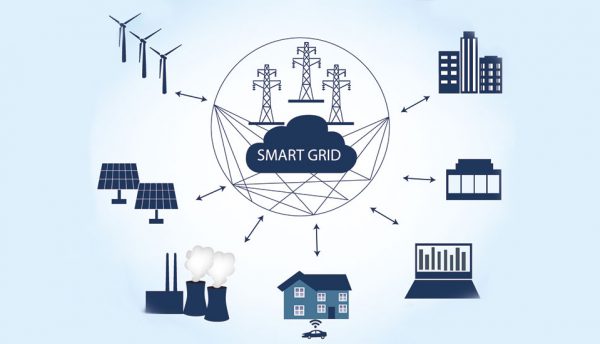
Transforming Energy Landscapes: The Evolution of Smart Grid Technology
The energy landscape is undergoing a profound transformation with the integration of smart grid technology. This article delves into the innovative realm of smart grids, exploring their significance, key components, and the potential they hold in revolutionizing the way we generate, distribute, and consume energy.
Understanding Smart Grid Technology:
Smart grid technology represents a leap forward in the modernization of the electrical grid. At its core, it involves the incorporation of advanced communication and control capabilities into the traditional power grid infrastructure. This transformative technology empowers utilities, consumers, and grid operators with real-time information and control over energy usage.
Key Components of Smart Grids:
Smart grids comprise a network of interconnected components, each playing a crucial role in enhancing efficiency and responsiveness. These components include smart meters, sensors, communication networks, and advanced analytics. Smart meters, for instance, enable real-time monitoring of energy consumption, fostering a more dynamic and interactive relationship between consumers and the grid.
Real-Time Monitoring and Control: Enhancing Grid Efficiency:
One of the primary advantages of smart grid technology is its ability to provide real-time monitoring and control. Grid operators can gain immediate insights into energy usage patterns, identify potential issues, and make informed decisions to optimize the distribution of electricity. This capability enhances grid efficiency and reliability.
Integration of Renewable Energy Sources: Fostering Sustainability:
Smart grids play a pivotal role in the integration of renewable energy sources into the existing grid infrastructure. The variability of renewable sources like solar and wind necessitates a flexible and responsive grid. Smart grid technologies facilitate the seamless incorporation of renewable energy, balancing supply and demand while fostering sustainability.
Demand Response and Consumer Empowerment: A Dynamic Partnership:
Smart grids enable demand response programs that empower consumers to actively participate in managing their energy usage. Through smart meters and communication networks, consumers can receive real-time pricing information and make informed decisions about when to use electricity, contributing to load balancing and reducing peak demand.
Enhanced Grid Security: Safeguarding Critical Infrastructure:
With the increasing complexity of the energy landscape, grid security becomes a paramount concern. Smart grid technology enhances security by implementing robust cybersecurity measures. The integration of advanced communication systems allows for quick detection and response to potential threats, safeguarding critical infrastructure against cyber attacks.
Predictive Analytics for Maintenance: Minimizing Downtime:
Smart grids leverage predictive analytics to anticipate equipment failures and proactively schedule maintenance. This approach minimizes downtime, enhances the reliability of the grid, and reduces the need for reactive, costly repairs. Predictive maintenance ensures that the grid operates at optimal levels, preventing disruptions.
Challenges and Considerations: Navigating the Path Forward:
Despite the transformative benefits, the adoption of smart grid technology comes with challenges. These include the need for significant investments, concerns about data privacy, and the requirement for standardized protocols. Navigating these challenges requires a collaborative effort from stakeholders, including governments, utilities, and technology providers.
The Future of Smart Grids: Unlocking Potential:
As technology continues to advance, the future of smart grids holds immense potential. The integration of artificial intelligence, machine learning, and the Internet of Things (IoT) is set to further enhance the capabilities of smart grid systems. This evolution will result in even more responsive, efficient, and resilient energy infrastructures.
For a deeper exploration of smart grid technology and its transformative impact, visit Smart Grid Technology. This resource offers insights, case studies, and valuable information for those seeking to understand and navigate the evolving landscape of smart grids.



